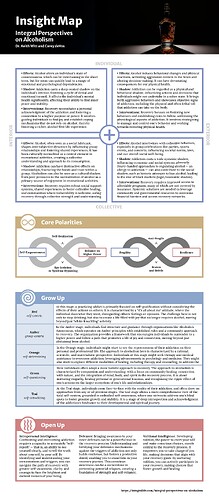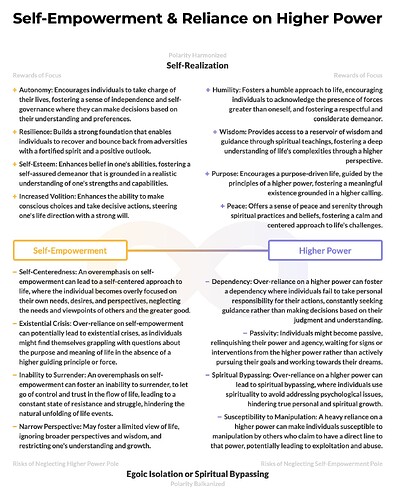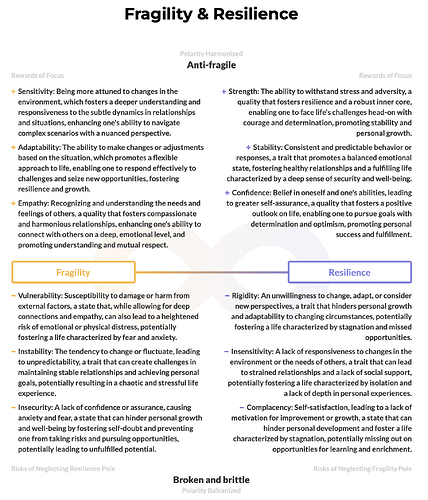Alcohol addiction is a deeply entrenched issue that affects a significant portion of the population, with around 10% of American children being raised in a family with at least one alcoholic parent as of 2019. In this episode of Witt and Wisdom, Dr. Keith Witt and Corey deVos undertake a comprehensive exploration of alcohol addiction, its effects, and the recovery process through the lens of Ken Wilber’s integral theory, which encompasses all four quadrants - individual (internal and external) and collective (internal and external). This approach facilitates a deep understanding of the issue, shedding light on the personal experiences of the addict and the broader societal implications, and offers a more holistic view of the complexities involved in alcohol addiction.
The conversation is not just a deep dive into the negatives associated with addiction, but also offers a hopeful perspective on recovery, emphasizing the transformative power of integral awareness in finding more fulfilling and healthier solutions. By examining the effects, addiction, and recovery through all four quadrants, Keith and Corey offer a rich and nuanced understanding of the issue, encouraging a more inclusive and empathetic approach to dealing with alcohol addiction. This discussion stands as a vital resource, not just for those grappling with addiction, but also for their families and society at large, fostering a deeper understanding and highlighting pathways to healing and recovery. It calls for a collective effort, urging everyone to be more aware and to actively participate in the transformative journey from addiction to recovery, thereby nurturing a society that is more understanding, compassionate, and equipped to handle the complexities of alcohol addiction.
Related Polarities
Here are some of the most critical polarities to consider while listening to this broadcast.The polarity between Self-Empowerment and Reliance on a Higher Power represents a fundamental dynamic in the journey of personal development and recovery. On one end, self-empowerment embodies the principles of autonomy, self-reliance, and personal responsibility, where individuals harness their inner strength to navigate life’s challenges. On the other end, reliance on a higher power speaks to the surrender to a force or entity greater than oneself, which can offer guidance, support, and a broader perspective on life. This polarity is a central theme in many recovery narratives, including those in 12-step programs, where individuals are encouraged to find a harmonious balance between personal agency and spiritual surrender.
Self-empowerment stands as a pillar of personal development, fostering autonomy and a sense of control over one’s life. It encourages individuals to take charge of their decisions, carve out their path, and build confidence through personal achievements. The positives of this pole include fostering resilience, encouraging personal growth, enhancing self-esteem, promoting self-reliance, nurturing critical thinking, facilitating goal achievement, and allowing for self-directed learning. However, when overly emphasized, it can lead to negative outcomes such as isolation, overburdening oneself, developing a narrow perspective, fostering arrogance, encouraging a dismissive attitude towards others’ input, creating a potential for burnout, and engendering a lack of receptivity to external guidance and wisdom.
Reliance on a higher power, on the other hand, encourages individuals to seek guidance and find strength in something greater than themselves. This pole promotes a broader perspective on life, fostering hope, community support, spiritual growth, a sense of purpose, and a deeper understanding of life’s interconnectedness. The positives of this pole are that it can instill hope, foster a sense of belonging, encourage humility, provide a source of wisdom and guidance, promote spiritual growth, offer a sense of peace, and nurture a supportive community. However, when overly dissociated from self-empowerment, it can lead to dependency, uncertainty, potential for exploitation, diminished personal agency, avoidance of personal responsibility, fostering passivity, and creating a potential for disillusionment.
Integrated Polarity: Self-Realization
This integration calls individuals to their highest and most integrated Self, where personal empowerment and spiritual connection coalesce to foster a rich, fulfilling life. Self-realization represents a state where the individual navigates life with a grounded sense of self, coupled with a humble acknowledgment of a higher power. It embodies a journey where the self is not lost but enriched through a connection with the higher, fostering a life of depth, purpose, and harmonious existence.
Disintegrated Polarity: Egoic Isolation or Spiritual Bypassing
In the unintegrated state of this polarity, individuals may fall into two detrimental patterns: egoic isolation or spiritual bypassing. Egoic isolation refers to an overemphasis on self-empowerment to the point of disconnecting from the guiding force of a higher power, leading to narcissism, self-centeredness, and a loss of a deeper sense of purpose and connection. On the other hand, spiritual bypassing occurs when there is an over-reliance on a higher power, using spirituality to sidestep personal responsibilities and avoid necessary personal growth work, which can foster passivity, over-dependence, and a lack of personal agency. Both patterns prevent individuals from reaching a harmonious balance, where they can fully embody their empowered self while being guided and nurtured by a connection to a higher power. This unintegrated approach can lead to a life marked by inner conflict, unfulfilled potential, and a lack of true fulfillment and deeper understanding of oneself and the world.
Tips for integrating this polarity: Explore Devotional Mysticism, a practice rooted in Bhakti Yoga, by choosing a deity or higher power that resonates with you. Engage in daily rituals, prayers, and meditation dedicated to nurturing a deep and loving connection with this chosen divine presence. As you do so, consciously let go of egoic limitations and embrace humility, recognizing the interplay between your personal empowerment and the wisdom of the higher power. This practice dissolves the boundaries between the self and the divine, fostering an integrated approach where self-empowerment coexists harmoniously with reliance on a higher power, ultimately leading to a profound sense of interconnectedness and spiritual growth.
The polarity between fragility and resilience represents the dynamic interplay between vulnerability and strength, both of which are essential aspects of human experience and development. Fragility embodies the sensitive, delicate, and vulnerable aspects of our being, allowing for empathy, understanding, and deep connection with others. Resilience, on the other hand, stands for the capacity to recover and bounce back from adversities, embodying strength, stability, and robustness. This polarity is a dance between embracing vulnerability and fostering strength, where each pole has its unique offerings and drawbacks, and their harmonious integration leads to a state of antifragility.
Fragility is characterized by a heightened sensitivity to external influences, which can foster deep empathy, understanding, and a rich inner life. It allows individuals to connect profoundly with others and to appreciate the delicate nuances of human experience. However, when overly emphasized, it can lead to vulnerability to harm, emotional instability, and a tendency to be easily broken or damaged. It is a state where one might find themselves overly cautious, avoiding risks to prevent potential hurts, which can limit personal growth and the exploration of broader horizons.
Resilience represents the inner strength and fortitude that enables individuals to recover and thrive despite facing adversities. It embodies a spirit of endurance, adaptability, and a positive outlook towards life, fostering a sense of stability and security. Resilient individuals can navigate challenges effectively, learning and growing from them. However, an overemphasis on resilience can lead to a dismissal of vulnerability, a lack of emotional depth, and a tendency to overlook the finer, sensitive aspects of human experience. It might foster a rigid personality, resistant to change and lacking in empathy and understanding.
Integrated Polarity: Antifragile
Antifragility is the harmonious integration of fragility and resilience, where one not only withstands adversities but grows stronger through them. It embodies a state of dynamic balance, where sensitivity and strength coexist, allowing individuals to navigate life with a deep understanding and a robust spirit. In this state, people no longer try to avoid chaos but are rather able to see chaos as an opportunity for personal and collective growth. Antifragility fosters a rich inner life coupled with the courage to face the world boldly, embracing both vulnerability and fortitude. It represents a mature, evolved state of being, where one can dance gracefully between the poles of fragility and resilience, leveraging the strengths of both to forge a path of growth, understanding, and harmony.
Disintegrated Polarity: Reactive Dissonance
A state of being broken and brittle emerges when there is a disintegration between fragility and resilience, leading to a condition where the individual is unable to recover from shocks and adversities. Too much resilience or “hardness” makes us brittle, while too much fragility can leave us broken. This state is characterized by a lack of balance, where one might be trapped in a cycle of vulnerability without the strength to recover, or in a rigid state of resilience, devoid of sensitivity and understanding. It represents a fragmented self, unable to navigate the complexities of life effectively, prone to breaking under pressure, and lacking the depth and richness that comes from a harmonious integration of both poles.
Tips for integrating this polarity: To integrate the polarity of fragility and resilience into a state of antifragility, one can reflect on the art of “kintsugi,” which involves repairing broken pottery by filling the cracks with gold, celebrating the beauty of imperfection. Similarly, engage in practices that foster both sensitivity and strength, much like the delicate yet resilient pottery. Cultivate a deep inner awareness and understanding through mindfulness meditation, allowing the golden threads of wisdom to weave through your vulnerabilities. Simultaneously, fortify your inner resilience with practices such as physical fitness and psychological therapy, creating a secure foundation. Within this mosaic of life, artistic pursuits become a canvas to embrace fragility, like the delicate pottery piece, while setting and pursuing achievable goals acts as the sturdy frame that builds resilience. The key is to nurture a balanced approach, akin to the art of kintsugi, gracefully dancing between fragility and resilience, and celebrating the full spectrum of human experience in a harmonious, integrated manner.


